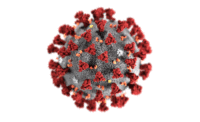Reopening business during COVID-19: Prioritize health, reduce risk and adapt
Occupational health company pivots as workers return to their jobs

Like most businesses across the country, Examinetics was greatly affected when the coronavirus pandemic hit. Fortunately, our business was able to pivot, and by adjusting our service model to offer COVID-19 screenings, we have continued to provide valuable services to our clients. Our team was agile and nimble, becoming immersed in coronavirus solutions and consulting. We’ve been on the front lines of this pandemic with you and wanted to share some thoughts as companies get workers safely back to business.
Create a roadmap
The first step to any reopening or business continuity plan is to create a roadmap. Just as you wouldn’t throw a facepiece on your employees without first designing a respiratory protection program, you shouldn’t restart operations without a plan. In their recent article “The Restart”, McKinsey & Co. advises companies to create a detailed “relaunch map” that defines a solid framework for action in a highly volatile environment. In the COVID-19: A Safety and Health CEO Perspective webinar hosted by several of the leading safety organizations, Jennifer McNelly of the American Society of Safety Professionals said, “Recovery needs a good framework, a good architecture, but the actions required are unique to each company.”
At the top of the list of any effort to renew business is ensuring confidence in your company. Trust is going to be a precious commodity in the new world. Your consumers and clients will want to know what you are doing to reduce risk, while your employees will demand to know how you are protecting their health and keeping them safe. There will be no shortage of guidance from various levels of government and your employees will use these to create a checklist as they assess their work environment. Having transparency and alleviating all their concerns will build the confidence critical to moving forward. In a recent Inc. article, Stanley McChrystal – former commander of U.S. Joint Special Operations Command – says that “priority one is candor” in order to have your team’s faith. He should know, having managed thousands of military personnel around the world.
Prioritize employee health
To prioritize employee health, new safety measures must be put in place. Companies across all sectors will need to adapt with new safety, security and environmental protocols. Our consultants are guiding our clients through such areas as:
- Screening employees and visitors (i.e. temperature checks, symptom questionnaires)
- Virus and antibody testing
- Increased usage of PPE
- Efforts to ensure hygiene & sanitation
- Physical distancing
- Better communication and education
- Monitoring and tracing solutions
Many types of business will now be reevaluating and expanding their work-from-home (WFH) policies. Companies may realize both health and economic benefits by doing so, creating a win-win scenario. Safety professionals may now need to evaluate how to engage remote teams. Depending on your state of readiness, new tools might be needed to facilitate communication, increase collaboration and manage distributed teams. Digital transformation is a buzzword that often gets thrown around in conference rooms, but current conditions should elevate the role of technology in safety.
However, don’t rush to overhaul your business to all WFH. Not every company and not every person is suited for this arrangement. WFH often creates less social interaction and communication challenges. In certain environments, a division between different categories of onsite and at-home employees may develop. Ultimately, it may be more difficult to maintain your company culture and detect disengaged workers.
Wherever your team is located – whether all together in a plant or spread out across various locations – communication is critical to engagement. Make sure to support your employees with the resources they need. Safety managers who are used to walking around and seeing everyone face-to-face may need to adjust their habits to include everyone in this new environment. Remember that a communication void often gets filled with misinformation, so over communicating is better than less. But be careful about excessive mandates that may be difficult to follow – pick the important things and create priority tactics people can remember. And beware the hidden dangers – presenteeism, isolation and mental health issues.
Expect constant change
Safety decision makers who embrace an agile mindset will be set up to succeed. Change will be constant in the near term, with new information continually arriving from government agencies and health organizations. OSHA and CDC will need to be monitored for guidance and alerts across various industries and locations. Additionally, the economic health and staffing needs of your company will fluctuate throughout this time. If you can speed decision making, then you can create some stability and quickly bring back a sense of “normal”. We have seen our clients who can make fast decisions get scheduled quickly for their compliance testing and not miss a beat.
Those of us in the safety world are used to a vigilant mindset and can help our companies through these trying times. Safety managers should be seen as experienced and steady voices in decision making. Businesses will be hyper sensitive to their liability and that means the safety role will be called upon for their expertise. In the above-mentioned industry webinar, Larry Sloan of the American Industrial Hygiene Association said this is an opportunity for our profession to step up. According to Sloan, “We need a seat at the table with business leaders. Our profession lends a credibility to helping workers safely return to their jobs in a different way that’s become our new normal.”
Choose empathy
Unfortunately, a crisis often brings out the worst too. Scams will be prevalent as we have seen with con artists trying to take advantage of PPE demand and shortages. Keep an eye on your team as anyone can become vulnerable to tricks and schemes when we add new complexity and technology. We need to be extra attentive to protect ourselves, our people and our business.
The bottom line is that empathy should be our guiding principle - not because of any federal mandate or government requirement, but because we only come out the other side when we all work together. This pandemic has shown us the network effect in real life and we must always remember the human element in safety.
Looking for a reprint of this article?
From high-res PDFs to custom plaques, order your copy today!








